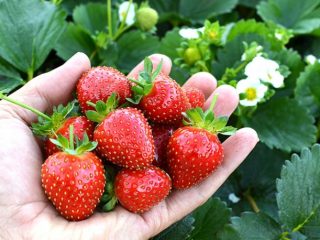Content
Strawberry Flair (Flair) - early, early maturing, Dutch cultivar, which has won the recognition of farmers from around the world. Despite the fact that the species does not have a high yield, it has many other advantages: marketable and taste qualities, keeping quality, large-fruited. Fleur is most suitable for growing in greenhouses for further marketing.
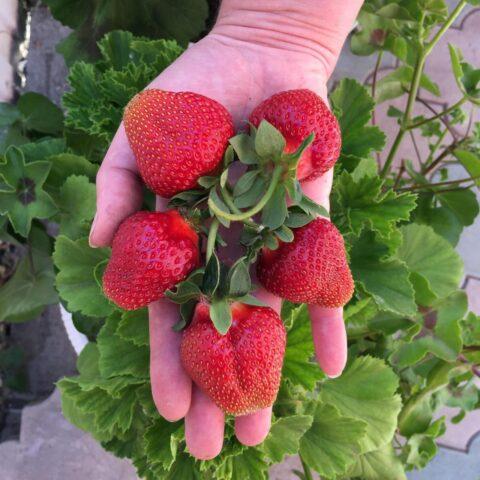
Bright red fruits darken as they ripen
Breeding history
The berry crop of the Fleur variety was obtained in 2004 in the Netherlands thanks to the work of Dutch breeders. The author of the variety is Marcel Suiker, employee of Flevoplant B.V. Fleur's strawberry has gained particular popularity in Germany and Scandinavia; in Russia it is cultivated in areas with suitable climatic conditions.
Description of the Fleur strawberry variety and characteristics
Fleur is a non-refurbished strawberry variety characterized by high quality taste and fast ripening. The relatively new hybrid form has vigorous bushes, reaching 40-45 cm in diameter, 20-25 cm in height. The plant is open-type, compact, but multi-strand, with a small amount of medium-sized foliage, bright green, with serrated edges. Strawberry petioles are strong, long, peduncles are high - up to 16 cm, powerful, located at the level of the leaves, but over time, they lie on the ground. White buds, five-petal, very large - up to 4 cm in diameter. Fleur has a high adaptive capacity, strong rosettes. Berries of the variety are large, regular, one-dimensional. When ripe, red fruits acquire a darker shade. The surface of the berries is shiny, the achenes are small, depressed to a medium depth, and have a yellow tint. The strawberry flesh is red, contains a lot of juice, acquires a caramel flavor as it ripens. Fleur's commercial value is very high.
The variety is resistant to rain and humid climates, but does not tolerate drought and hot weather at all. Abrupt changes in conditions and temperature changes negatively affect the fruiting and growth of bushes.
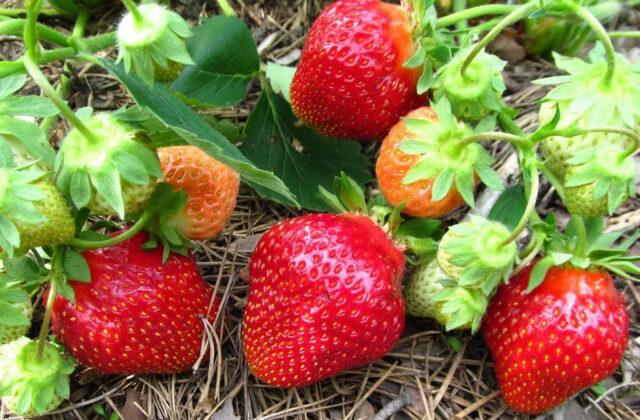
Fleur is a self-bearing strawberry variety
Characteristics of fruits, taste
Fleur strawberries ripen homogeneous and large. The shape of the berries is classical - in the form of an elongated cone, the average weight of the fruit is 20-30 g. At the initial stage of ripening, the culture has a rich red color, closer to harvest it acquires a darker color. All specimens are even, with a shiny surface and small yellow grains. Their flesh is dense, juicy, there may be voids inside, the aroma is strawberry. The fruits contain a high concentration of sugar, but at the same time they are not devoid of refreshing acidity. The taste of Fleur, according to experts, is very high.
Strawberries are recommended for universal use. It is consumed fresh, added to dairy products and desserts, used for freezing and canning, and dried.
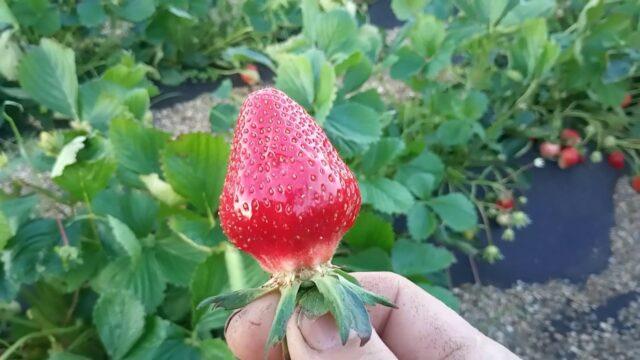
Fleur berries are high in antioxidants
Ripening terms, yield and keeping quality
One of the main advantages of Fleur strawberries is the amicable ripening of fruits, the timing of which directly depends on the growing region.Under favorable conditions, full ripening occurs in 30 days, that is, a week earlier than other varieties. In the Moscow region, strawberry harvesting is carried out towards the end of June, and in the south - already in mid-May.
As for the number of fruits on the bush, this indicator is strongly influenced by agricultural technology and the weather. On average, one adult plant brings up to 0.5 kg of ripe berries. If Fleur is cultivated in a closed ground, then this figure increases to 0.8 - 1 kg.
The variety has high keeping rates, suitable for transportation over short distances. Harvesting is very easy as all the berries are in plain sight.
Growing regions, frost resistance
The variety bears fruit well both in tunnels, greenhouses and equipped greenhouses, and in open ground. Areas with a temperate climate are best suited for its cultivation.
When grown in cold areas, the variety needs a mandatory shelter with the arrival of frost. In the south, the culture safely survives the winter under mulch without additional insulation.
In hot areas with severe drought, strawberries do not do well. High temperatures contribute to the deterioration of the presentation and taste of berries, negatively affect the yield, and reduce fruiting.
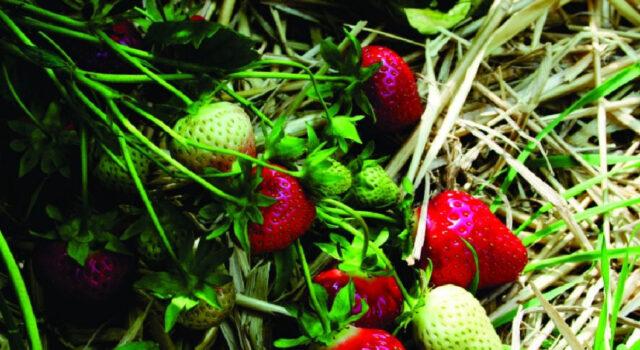
The variety develops productively and forms ovaries in cool weather.
Disease and pest resistance
According to the originator of the variety, the Fleur strawberry has an average resistance to major diseases and pests, although gardeners say that in spring and autumn it must be treated with professional protective preparations. If verticillus or spotting spreads on the site, the variety will not be able to resist them.
Also, the variety can be attacked by pests: ants, slugs, aphids. To combat them, you should use funds purchased in specialized stores.
Advantages and disadvantages of the variety
Judging by the description of the variety, photos and reviews of gardeners, the Fleur strawberry is not an ideal variety and has not only advantages, but also disadvantages.
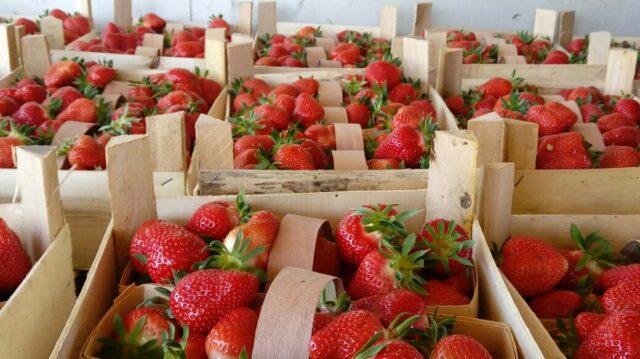
Fleur is one of the best strawberries for sale
Benefits:
- earlier flowering and fruiting;
- pleasant aroma and taste;
- amicable maturation;
- large-fruited;
- moisture resistance;
- long shelf life;
- excellent presentation;
- good transportability.
Disadvantages:
- instability to heat;
- disease propensity;
- the likelihood of low productivity;
- low productivity.
Reproduction methods
Strawberry Fleur can reproduce in three ways:
- Sockets. At the time of the growing season, the variety forms a large number of whiskers, which should be dug in at the beginning of summer to get new bushes. With the onset of autumn, they are removed from the ground along with the roots and planted.
- By division. Fleur grows very quickly, which is why some gardeners divide mother bushes. To do this, they are carefully dug out, cut into pieces so that each has a root system, then placed in previously prepared beds.
- Seeds. To breed a variety by seed, large grains must be harvested from the parent crop. To do this, the overripe berries are dried, after which the planting material is separated from them, sown in containers with fertile soil and covered with a film. After the sprouts appear, it is removed.
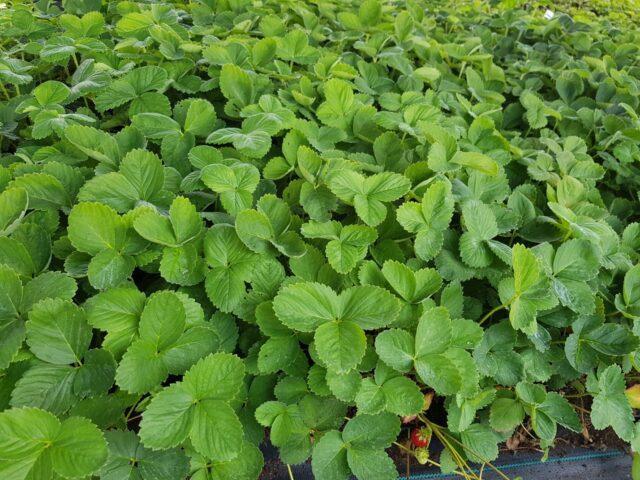
It is best to breed strawberry fleur with rosettes
Planting and leaving
Strawberry Fleur requires certain conditions to grow successfully. Plant development and yield are strongly influenced by the choice of location and adherence to agricultural technology.The cultivar prefers an open, draft-free area with good lighting throughout the day, and can also be harvested under greenhouse conditions. The soil can be of any composition, but it is better if it is soil with a normal acidity level. For Fleur strawberries, since its bushes are small in size, a two-line or one-line planting scheme is suitable with an interval between shoots of 20-30 cm, rows - 40 cm.
Caring for the plant consists in periodic watering and fertilization, also do not forget about mulching and loosening the beds. Moisten the culture with settled warm water as the earth dries up, at the root. Top dressing is carried out with complex fertilizers containing phosphorus, nitrogen, potassium and other useful elements. The soil should be loosened a few days after watering, mulched with sawdust, cut grass and spruce needles. It is recommended to cover the bushes before winter.
Preparing for winter
Strawberry Fleur has good frost resistance, but only if the bushes are provided with good shelter. The ideal option for wintering is insulation with thick spunbond or agrofibre placed on low arcs. When growing the species in open ground, there is a danger of freezing at the time of return frosts.
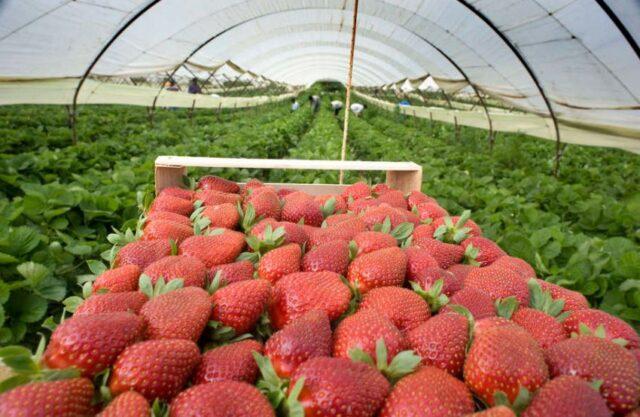
Growing strawberries outdoors is difficult
Conclusion
Strawberry Fleur is a very sensitive variety to the vagaries of the weather. Good results are not guaranteed in all regions; it shows itself better in greenhouses. The main advantages of the variety are considered excellent presentation, early maturity, immunity to some diseases. Reviews of Fleur's strawberry are controversial, someone liked the variety, but someone was very disappointed in it.
Reviews of gardeners about Fleur strawberries








